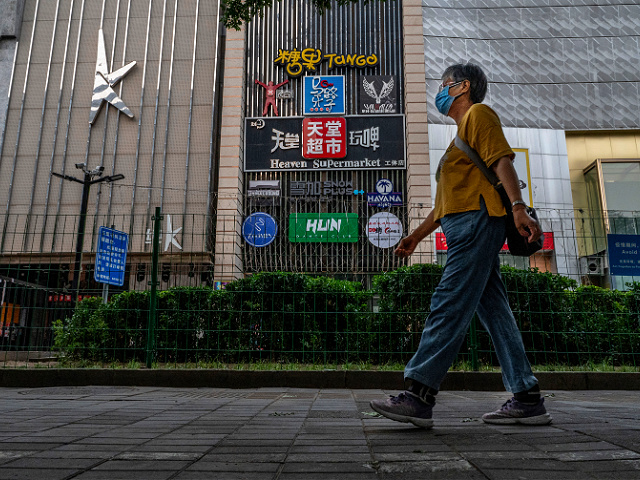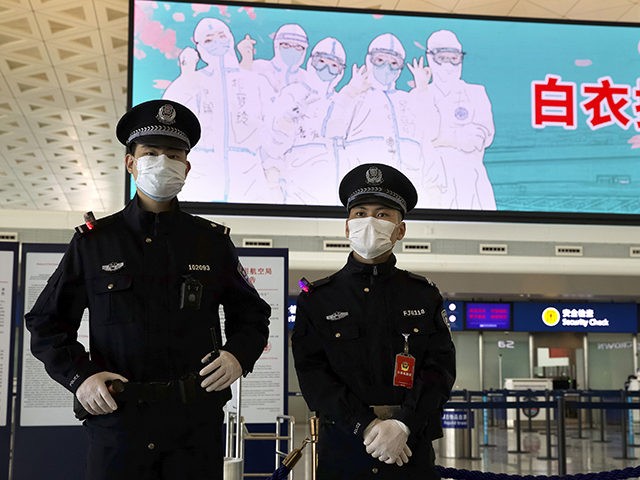China’s state-run Global Times on Monday reported an unseasonable spike in influenza cases across southern China blamed by government doctors on “weak immunity” due to “low exposure to respiratory pathogens affected by prevention and control measures against COVID-19 [Chinese coronavirus].”
In other words, people are catching the flu because of coronavirus lockdowns.
The flu surge charted by the Chinese National Influenza Center (CINC) was impressive, skyrocketing from “2.8 percent in early May to 30.1 percent in mid-June.” Doctors detected 507 distinct influenza outbreaks across 17 provinces, which is about four times the usual rate for this time of year.
“Frequent rainfalls and low temperatures this summer may have contributed to the abnormal influenza prevalence in southern China, while prevention and control measures against COVID-19 have reduced the public’s exposure to respiratory pathogens, resulting in weakened herd immunity against influenza,” a hospital executive in Shenzhen told the Global Times.
China included its ritual blame of other countries for its problems. Lu also blamed foreign governments for lifting their coronavirus restrictions and “creating fertile ground for the resurgence of all kinds of diseases.”
A health worker wears protective clothing as he looks at his phone near a community that is locked down, after a coronavirus outbreak on June 13, 2022 in Beijing, China. (Kevin Frayer/Getty)
The Global Times quoted provincial health officials who said they were shifting staff away from coronavirus control to work on the flu outbreak, particularly at the pediatric level. Chinese health officials said, “it is not yet time to take off masks and give up social distancing.”
Doctors also told the Global Times that China should work to increase its influenza vaccination rate, which currently stands at 12 percent for pre-school children, compared to 70 percent for Western countries.
Outside observers were, unsurprisingly, less charitable in diagnosing the flu problem China created for itself.
“China has invested so many health resources in taming Covid that the authority lacks capacity to deal with other infectious diseases,” Council for Foreign Relations fellow Yanzhong Huang told the Financial Times on Tuesday.
“The upcoming flu season may be more severe than previous waves as a lack of exposure to old viruses makes people’s immune system less able to fend off new ones,” University of Hong Kong virologist Jin Dongyan predicted, casting an especially concerned eye at Shanghai, whose residents were sealed in their apartments for two months.

A woman walks by the closed Heaven Supermarket bar, which is at the centre of recent COVID-19 outbreak, on June 15, 2022 in Beijing, China. (Kevin Frayer/Getty Images)
The Financial Times noted that studies have shown China experiences between 90,000 and 200,000 influenza deaths per year, with most of the fatalities among the elderly. Chinese has officially killed only a little over 5,200 people in China since the beginning of the pandemic, though many outside observers have pointed to evidence that these figures are not an accurate representation of the effect the virus has had on the country.
Doctors in the United States have expressed concerns about how influenza might interact with the coronavirus. Hospitals have recently reported admitting patients infected with multiple strains of influenza in addition to Chinese coronavirus, well in advance of the traditional cold-weather flu season.
Chinese coronavirus was previously seen as somewhat inimical to the flu, which all but vanished at the height of the pandemic. Besides questioning the lingering effect of lockdowns and social distancing on immune systems, some epidemiologists theorize the pandemic cleared the way for previously extinct viruses to make a comeback.
Another possible issue is viral “cadence” – repeated exposure to viruses every year that boosts our natural immune response to them. The Chinese coronavirus pandemic and its social distancing measures may have disrupted that cadence for entire seasons of the flu, and even the common cold, making this year’s outbreaks more severe.

COMMENTS
Please let us know if you're having issues with commenting.